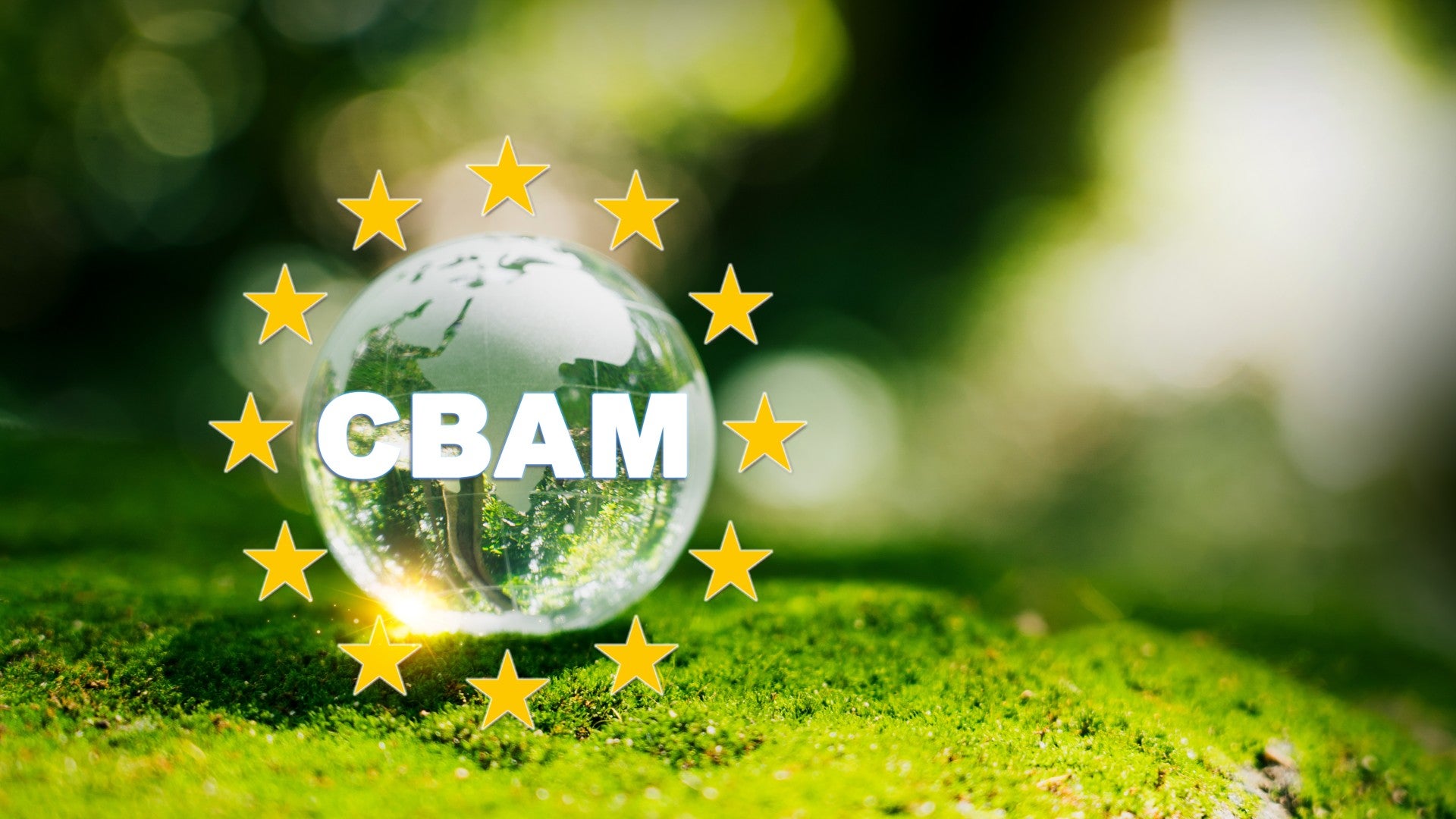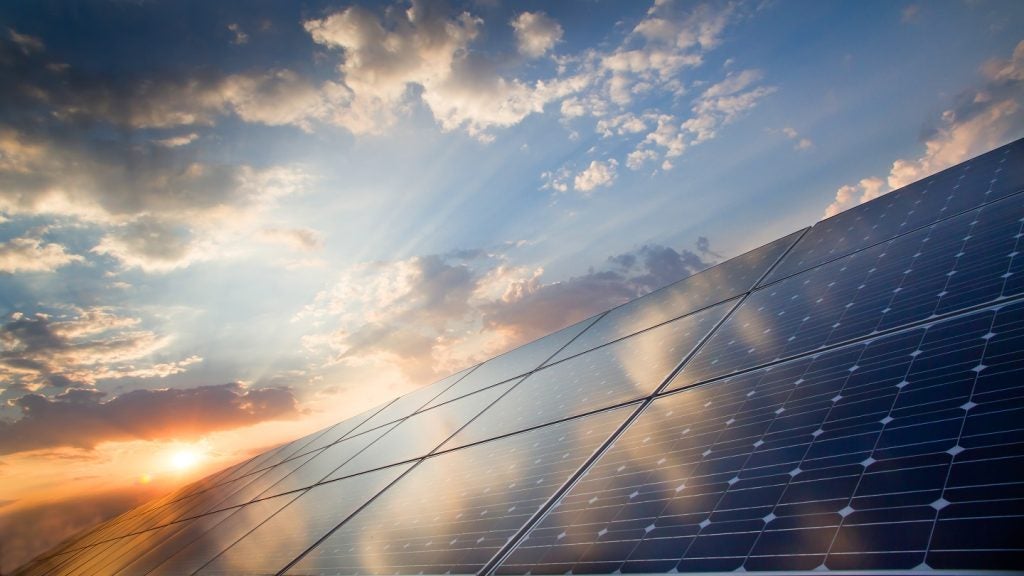
The EU’s Carbon Border Adjustment Mechanism (CBAM) is a tariff on carbon-intensive goods including cement, steel and chemical fertilisers when bought from countries without a carbon price.
In legislators’ minds, the policy will help domestic competitiveness by ensuring manufacturers inside the bloc are not being undercut elsewhere, as well as ensuring that internal carbon pricing initiatives are not circumvented. The rest of the world is not as convinced.
The CBAM was voted into law in May 2023, and 31 January marks the deadline for the first set of reporting under the regulation, meaning companies in the bloc will have to calculate and disclose the emissions of their imported goods. In the final days before the deadline, Power Technology’s sister publication Energy Monitor sat down with Philippe Pernstich, founding footprinting lead at carbon accounting firm Minimum, to discuss the CBAM, its limitations, and what it might mean for the rest of the world.
This interview has been edited for clarity and length.
What is the CBAM, and why does it exist?
Pernstich: CBAM, essentially, is a way of the EU addressing a long-standing issue that they’ve had with the EU Emissions trading system [ETS] whereby energy-intensive industries within the EU were saying that the EU ETS put them at a competitive disadvantage compared to companies or competitors outside of the EU as they do not have to pay for carbon credits for their emissions.
Currently, those carbon-intensive industries within the EU get an allowance of credits to start off with and if they exceed that allowance, they have to buy credits on the market. If they are under it, they can sell them. Going forward, however, this free allowance is going to disappear and they will have to pay for every single tonne of emission that they produce.
How well do you really know your competitors?
Access the most comprehensive Company Profiles on the market, powered by GlobalData. Save hours of research. Gain competitive edge.

Thank you!
Your download email will arrive shortly
Not ready to buy yet? Download a free sample
We are confident about the unique quality of our Company Profiles. However, we want you to make the most beneficial decision for your business, so we offer a free sample that you can download by submitting the below form
By GlobalDataThat is going to be a lot more expensive. So, in order to avoid this issue of carbon leakage – where as a result of this competitive disadvantage buyers of those products look outside of the EU to buy the products – the EU are introducing this carbon border adjustment mechanism and the idea is that that levels the playing field.
Is it more focused on protectionism than environmentalism?
I think there is a genuine argument that if they don’t put any measures to balance carbon leakage out and, as a result, production of those materials affected moves outside the EU, then you don’t have the control of emissions that the EU ETS is trying to achieve.
Obviously, the driver for the EU ETS is to promote efficiency and innovation to reduce CO2 emissions in the production of energy-intensive products, in particular all carbon-intensive products. So, avoiding this carbon leakage would also address an environmental issue.
How is the CBAM calculated currently?
It is based on broadly accepted accounting principles, but they have defined quite specific criteria for each of the of the products. It is effectively using product category rules of how you calculate the carbon emissions of each product and the level of quality of data that that is required.
They do have a transition period because at the moment CBAM is sort of in a pilot phase where companies will have to report for the first time at the end of the month for Q4 2023. Where they don’t have specific data of their own for their products using the EU ETS methodology there are a number of other methodologies that are recognized for now and there is a fallback default value, that can be applied.
Over time, that is going to be to be tightened and eventually, I think by 2026, that they’re looking to only accept the EU ETS methodology.
What impact is the CBAM having on the global supply chain?
It is a fairly limited set of products at this point that are affected by the CBAM right now. Really, the impact is very dependent on the markets for the producers. In Chinese steel or aluminium manufacturing, for example, there is relatively little export to the EU.
It’s mostly for the domestic market. So there is much more limited impact there, but certainly India and other countries that have got a significant export market to the EU will feel that impact.
How might India’s plans to align its domestic carbon credit trading scheme with the ETS to reduce exposure to the costs of CBAM work in practice?
Because it is about levelling up the carbon pricing level and the impact of carbon pricing, CBAM does have an allowance for recognizing other carbon pricing mechanisms, be it taxes or other emission trading systems in the countries of origin. The question, therefore, is really does the Indian mechanism meet the requirements of the EU ETS in terms of quality, stringency, and carbon price.
Any domestic trading systems or taxes are an offset against the CBAM, so it’s not necessarily the case that the EU will say okay, there is an emissions trading system in place and therefore you don’t have to pay any tariff. It’s sort of a balancing of the two.
Does India’s carbon trading mechanism meet those criteria in your opinion?
Well, it as I understand it, currently it’s a voluntary scheme. So I’m sure that there are a number of questions around the rigor of the carbon accounting. What sits at the base of all this is how much CO2 is emitted per ton of product, and how well is that calculated? What’s the basis for that, is that audited, and then how rigorous is the emissions trading system? Again, this is all about offsetting costs, and so I think it broadly comes down to audit trail and methodologies.
Will the CBAM expand in future?
Well, there is a balance of impact, cost and effort and as we’ve talked about before, the difficulty of actually calculating a detailed and accurate carbon footprint for products from materials. The products currently captured are commodity products fairly high up the value chain. We’re talking cement, steel, fertilizers – these have got quite tightly defined methodologies. Once you get into consumer products, the complexity of calculating accurate footprints becomes much bigger because there’s a more complex supply chain involved.
Having said that, I think there is every chance that it is going to evolve and be applied to more processed products, because – and this is where then the boundary between protectionism and environmental considerations kind of shifts – one of the ways that countries could start to circumvent the CBAM restrictions is rather than importing the raw materials doing the production of manufactured goods in the country of origin and then exporting the finished goods. So I think we’ll probably see pressures to expand the scope of the CBAM.
Do you see the CBAM expanding into other countries?
The balance of trade is obviously quite different for China and India, with significantly more exports, so the dynamics are slightly different. But, having said that, China has its own emissions trading system as well and I read something just yesterday about discussions around global carbon taxes being held in Davos, although I think not getting too much traction. But those conversations are happening.
I think what we’ll see is greater linkages between different emission trading schemes internationally and mutual recognition and harmonization. It won’t be one global carbon tax or carbon pricing mechanism, but there will be a lot of links between regional schemes.






